Since the dawn of Chinese civilization, jade has been a highly treasured object.
Before it became a folk handicraft that was widely used in daily life, jade was a private possession of emperors and was only used in sacrificial ceremonies as offering to the gods.
It is said that unlike gold and silver, jade is overpriced because of its special meaning for the Chinese. It is usually considered as a type of precious stone that represents part of the spirit of China's 5,000-year long culture. In ancient China, jade was even regarded as "moral stone". The Confucian culture usually describes a man of noble character as "clear like jade".
However, in the old times, only the nobles and high-ranking officials could afford to buy jade-carved products. As a result, jade-carving techniques were controlled by palace workshops. With the collapse of Qing Dynasty, court jade artists ended their service for the palace and finally brought their skills for the ordinary people, soon creatig a new era of jade carving. In 1930s, the number of professional artists increased to 6,000, and the industry reached its heyday.
Among all the items, jade seal used to be one of the most popular jade products that was widely used by men of letters as one's signature. Therefore, Chinese people had the habit of collecting fine Jade seal for hundreds of years.
With the purpose of protecting traditional art, Jade-sealing was listed as an intangible cultural heritage at the municipal level in 2010. Yang Baozhong (杨宝忠), a recognized inheritor of this handicraft, told Sino-Us.com the stories behind his masterpieces and his own life.
The combined talent of intellect and experience
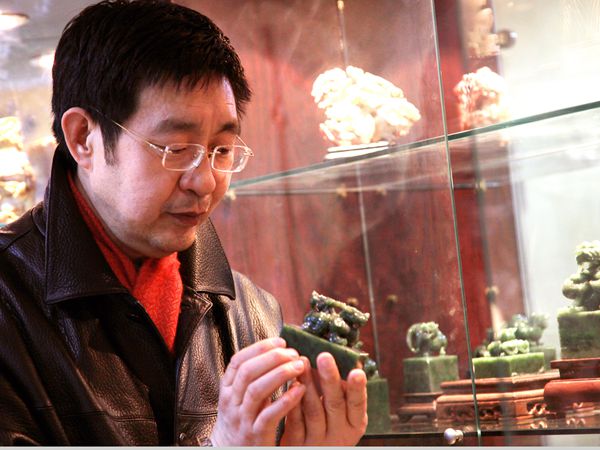
Jade-carving master Yang BaoZhong
A jade carving artist is not a simple craftsman; he must first be an artist, with accomplishments in painting, sculpture, and literature. In one word, to become a jade carving artist is not a simple matter, it requires not only the skills, but also the talent.
Yang Baozhong, 59, has been widely regarded as one of the most skillful artisans within Beijing traditional art circle. Yang was obsessed with painting and seal cutting since he was very young. He got into a Beijing jade factory after graduating from high school in 1976, and started his career there as an apprentice. He was the most talented and hard working student who always performed to the best of his ability. God rewards the diligent. Thirty years later, Yang became one of the best jade-carving masters of our times. He was awarded by Beijing Government with the title of “Master of Arts and Crafts”, and soon established his own studio in Jing Cheng Bai Gong Fang (京城百工坊).
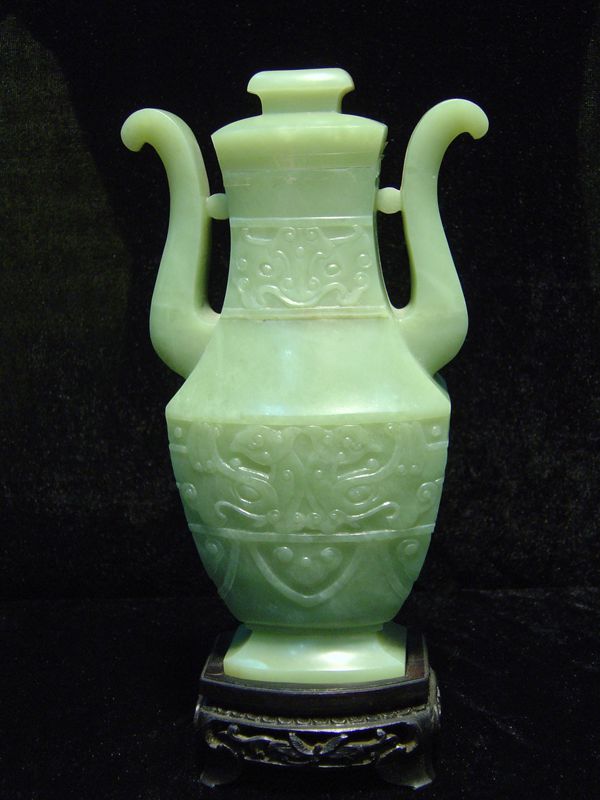
Yang ’s work: Tao Tie (a mythical ferocious animal) amphora (《饕餮纹双耳瓶》)
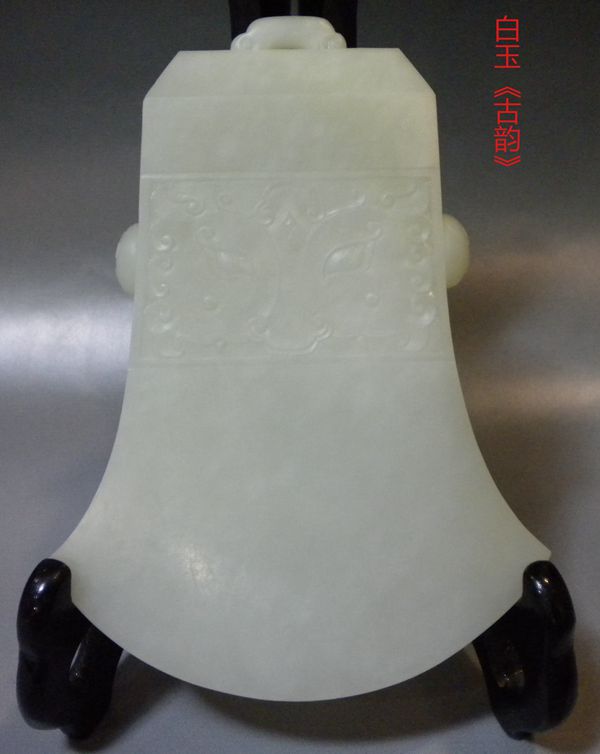
Yang’s work: ‘ancient rhyme’ carved from white jade (白玉作品:古韵)
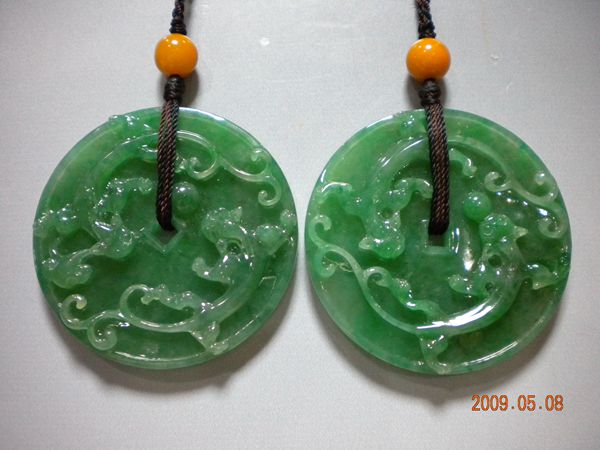
Yang’s jade work: Qian Long Bi (翡翠《钱龙璧》)
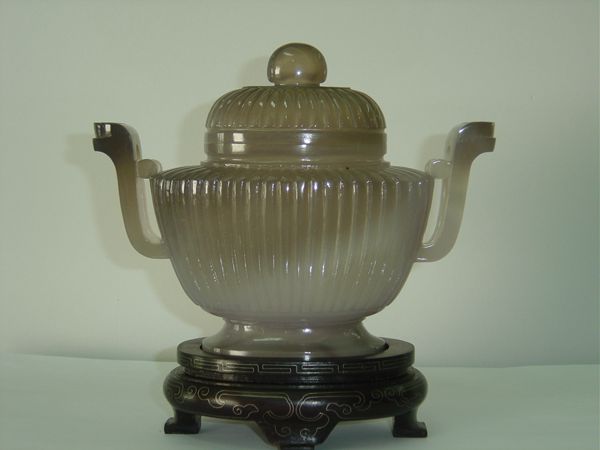
Yang’s work: chrysanthemum shaped incense burner made with agate (玛瑙《菊花瓣炉》)
Mysterious imperial jade seal
Yang is best known for his masterpieces of jade seal, especially imperial jade seal (玉玺) .
In ancient China, a superior jade seal was a symbol of power and status, especially for emperors. Historically, the Imperial Seal represented the very raison d’être of a dynasty. In fact, the Chinese character for country “国” contained the character “玉”, or jade, as an important symbol for national legitimacy.
In a way, imperial jade seal was even more important than the emperor himself, because whoever acquired the seal could decree imperial edicts in the name of the emperor. Imperial jade seal system was established by First Emperor of Qin and followed by all the other dynasties until the founding of the PRC. The National Palace Museum possesses the last existing 25 imperial jade seals while the majority have disappeared from history with no trace. To make matters worse, the remaining records from different periods are often contradictory to each other. It is said that the details about the seals were deliberately omitted for complex political reasons. Thus, modern people know little about imperial jade seals.
Under these circumstances, high quality replicas are extraordinarily important and necessary. The imitated imperial jade seal is not only an object of art, but also significant archaeological reference.
In order to create the perfect seal, Yang read numerous ancient books for reference, and consulted with experts from Tsinghua University. He successfully renovated the jade seal of the King of Taiping Heavenly Kingdom (太平天国)and “ 10 famous royal seals of China”. Some of his works are even displayed at the China National Museum.
“There is a story behind every imperial jade seal," Yang said. “Extensive knowledge and information was sealed in the jade seals, which may help modern people to uncover stories of the lost civilizations. Every imperial jade seal has a unique style that represents the highest technique and aesthetic.”
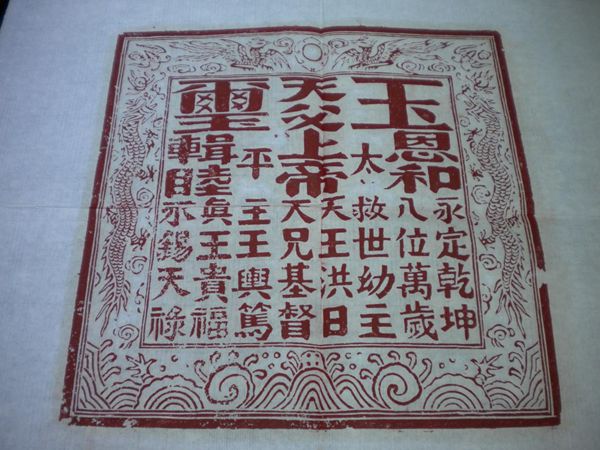
Yang’s work "The jade seal for Taiping Heavenly Kingdom”, which is displayed at National Museum since 1998. The combination of characters and decorative pattern on an imperial jade seal was rarely found in the history. The design illustrated a scene of two phoenixes flying to the sun and two dragons playing with a pearl at the same time. Meanwhile, the size of the seal is unusually large compared to other royal seals. “The impression of the seal was probably used as an official call to arms for Taiping insurrection army," Yang said.

Yang’s work, emerald seal “Panlong” was collected by the Mansion of Prince Gong.
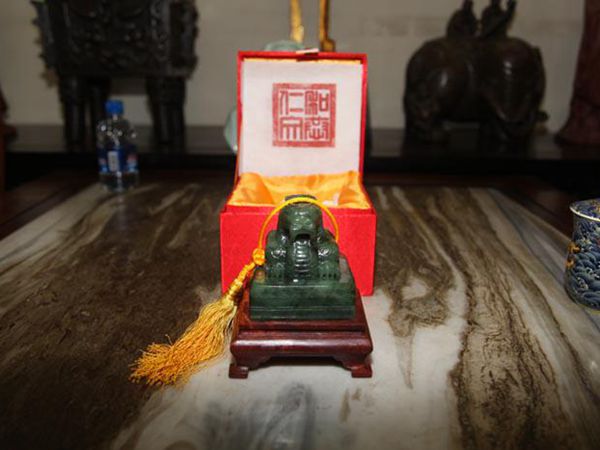
Imitation of the imperial jade seal of Qing Dynasty.
|
|
||
 |
| Touched | Sympathetic | Bored | Angry | Amused | Sad | Happy | No comment |
Rhythm Media Group is a multi-media company, operating a US-based Chinese daily newspaper, The China Press, and the paper's website - uschinapress.com (which has mobile-app version), as well as a Beijing-based English website Sino-US.com. The group boasts 15 branch offices across the US, and a number of cultural centers focusing on culture-related business in the North America, Chinese mainland, Hong Kong and Taiwan.Launched in September 2012, the Sino-US.com is designed to serve as a bridge between China and the US, and to keep its readership inside or outside China better informed by providing news and insights on China's current affairs, culture, life, business, people and sports.
|
|